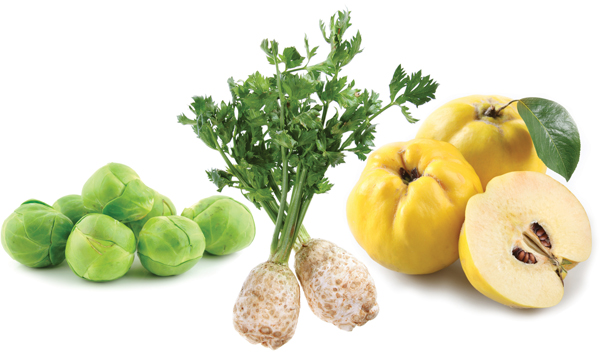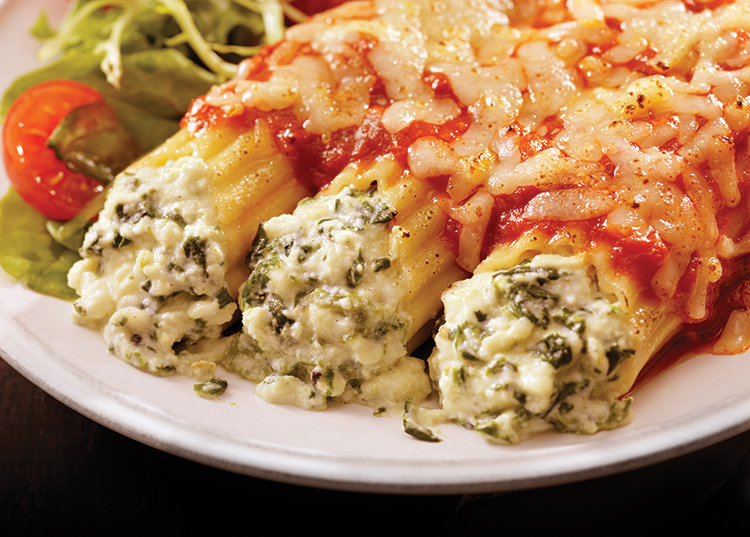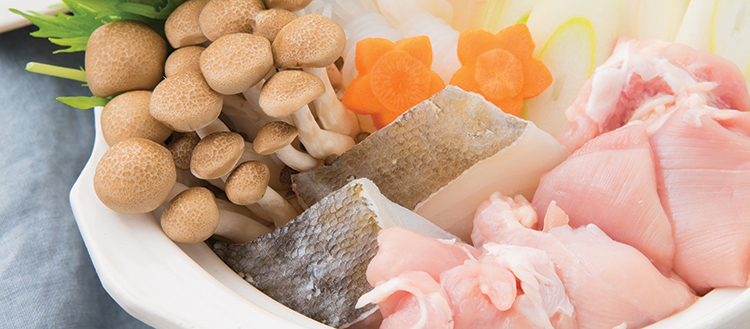by Peggy Paul Casella
Brussels Sprouts
The Brussels sprout plant looks like a lanky sea monster: Its thick spine grows straight up from the soil, covered with mini-cabbage “eyes” and dozens of leafy arms. Though the leaves are also edible, like those of fellow Brassicas, the sprouts are the most commonly eaten part of the plant. Look for whole stems at the farmers market with small, compact sprouts and store the sprouts in the refrigerator for up to three days.
Separate the leaves, toss them in a little oil, salt and pepper, and bake them into crispy vegetable “chips.” Shred them for slaws, salads, pasta dishes, gratins and hash. Wrap them in pancetta and bake them with honey and thyme. Marinate them in lemon juice, oil and garlic. Pickle them. Braise them in cream. Roast them whole or halved with bacon and rosemary.
Celeriac
This gnarly vegetable, also known as celery root and celery knob, may not win any awards for beauty, but pare off its rough exterior and you’ll find crunchy, ivory flesh that will add vibrancy to your meals all through winter. Celeriac comes from a variety of celery that is specially cultivated for the bulbous root. Its flavor is a mix of parsley and celery, and it can be eaten raw or cooked. Look for firm, small bulbs that are heavy for their size, and store them in the refrigerator for up to 10 days. To prevent the flesh from turning brown, soak it in lemon water before using.
Trim off the root and outer later with a knife, then grate or shave the raw flesh into salads and slaws. Roast it with other root vegetables. Boil and mash it with potatoes. Add it to soups, stews, gratins, casseroles and pot roasts. Chop it into spears for a delicious alternative to traditional oven fries.
Quince
These pome fruits are a little high-maintenance, but well worth the effort. Though they rein you in with an enticing perfume of vanilla, citrus and pineapple, their flesh is actually tough, woody and too astringent for most people to enjoy. Only after you’ve pampered them a bit—poached them in wine or honey water, for instance—will they reveal their delicious secrets: a rosy pink hue and a flavor reminiscent of apples and pears. Look for quinces with smooth, golden skin, and store them in the refrigerator for up to two months.
Peel, core and slice them, then poach them in sugar water with some honey and cardamom, citrus or a split vanilla bean. Add poached quince to apple pies. Bake them in tarts, cakes and other confections. Cook them down to make compote, jam or membrillo paste for cheese plates and savory dishes. Roast them with lamb or pork.











